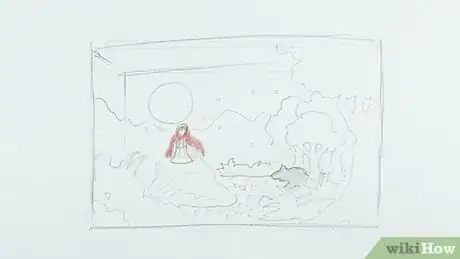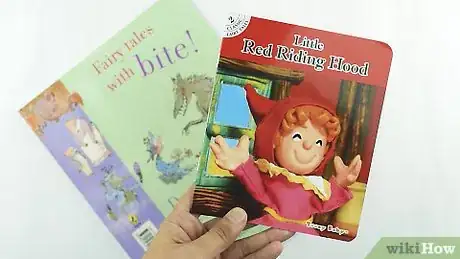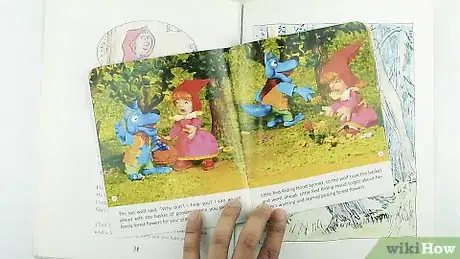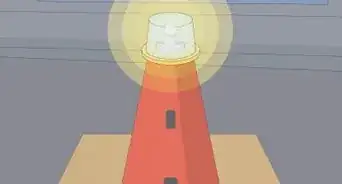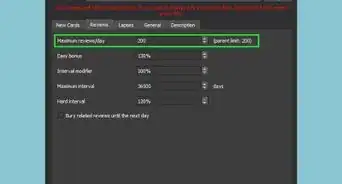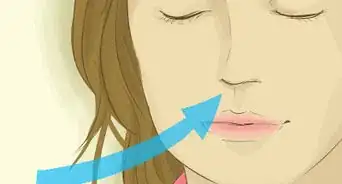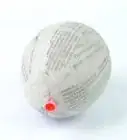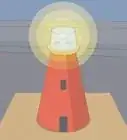This article was co-authored by wikiHow staff writer, Sophia Latorre. Sophia Latorre is a Content Manager on the wikiHow team. Before joining wikiHow, Sophia worked as a technical editor and was published in six International Energy Agency (IEA) Wind Annual Reports. Now, she writes, edits, and reviews articles for the wikiHow Content Team, working to make the content as helpful as possible for readers worldwide. Sophia holds a BA in English from Colorado State University.
There are 7 references cited in this article, which can be found at the bottom of the page.
The wikiHow Video Team also followed the article's instructions and verified that they work.
This article has been viewed 1,464,173 times.
Learn more...
Building a diorama is a fun DIY project in which you can create an exciting scene in a small space. Dioramas allow a lot of room for creativity and innovation. Though dioramas usually display a historical time period, a nature scene, or a fictional situation, you can make one to show anything that you're interested in making. Whether you are designing one for a school project, as a base for a model, or just for fun, building a diorama is an easy and enjoyable project!
Steps
Planning the Diorama
-
1Make a list of the items you’ll need and gather your supplies. Though the items you’ll need depend on the concept or theme, you may want modeling clay, construction paper, glue, scissors, paint and a paintbrush, markers, felt, and fabric scraps. You may also want miniatures, like figures or furniture, found objects, like rocks and twigs, and printed pictures or magazine pages. Browse your local arts and crafts store to find everything you need.
-
2Make a rough sketch of your ideal diorama. Look for inspiration online, like on Pinterest or YouTube. Sketch out what you want the diorama to look like, including the background and foreground. Think of the composition of the piece, and the layout of all the figures.[1]
- For instance, you could make a scene of a 1950s diner that includes figures dressed in poodle skirts or jeans and a leather jacket, a jukebox, red vinyl stools at a counter, and a black and white checkerboard floor.
- Make sure that the miniatures will be appropriate to the scale of the rest of the diorama.
- You might need Styrofoam balls of different sizes, paint, hot glue, and fishing line if you’re recreating the solar system.
- For a nature diorama, collect flowers, berries, leaves, and seeds.
Advertisement -
3Choose a concept or theme. Dioramas are small scenes created of layers of materials, all depicting a similar concept or theme. If you’re making a diorama for a school project, your theme may be assigned to you. Otherwise, you can choose to portray a scene from a book, a historical time period, an example of an ecosystem, an animal or plant group, or something else entirely.[2]
- For instance, you could choose to create a diorama that depicts the rainforest or the desert. Alternatively, you could stage a scene from the Civil War or the first lunar landing.
-
4Research the subject. Once you’ve chosen a theme, you’ll need to do research to make your diorama as lifelike as possible. Find out as much as you can about your chosen theme so you can include both large and small details.[3]
- If you’ve chosen an ecosystem, find out what kind of soil or water, plant life, and animal life are found there. For instance, an ocean ecosystem has salt water, coral, seaweed, algae, sharks, rays, turtles, crustaceans, fish, etc.
- For a historical time period, think about available technology, popular fashion and art, how people spent their time, and what buildings looked like.
-
5Select a container. Because dioramas have layers of background, they should be made in a box or frame that is several inches deep. The container must have an open-faced front so that viewers can see the scene. A shoe box or shipping box turned on its side works incredibly well for creating a basic diorama. Larger dioramas can be created out of a large wooden crate or frame attached to a box.[4]
- Get creative with the frame for your diorama. For example, a diorama depicting a family scene or people could be done in a refurbished dollhouse.
- Take into account the design of the diorama when selecting the container. For instance, a diorama about the rainforest will need to be tall enough to accommodate the trees and layers of vegetation you’ll be showcasing.
- You can paint the outside of your box for a more finished look. Do this first and let the paint dry before you start work on the inside of the diorama.
Building the Scene
-
1Create your background first. Begin at the back of the container and work your way forward, adding layers of details and images to create depth in your scene. Make the background first against the farthest and inside walls of your box. Consider painting a basic scene or printing an image and gluing it on. You could also create a collage out of magazine cutouts to act as the background for your diorama.[5]
- Coloring on the cardboard with markers will just make everything look dark. Cut out construction paper and glue it on the box for brighter colors.
- For an indoor scene, glue a magazine cutout of a living room to the back of the box to make it look like a house.
- For a solar system diorama, glue dark blue or black construction paper to the box and paint small white or silver stars on it.
-
2Build up the ground or landscape. A realistic diorama should include details on the bottom of the box as well. You can use pictures, paint, or modeling clay to create a realistic ground or floor for the diorama. Leave it flat or add hills or depressions as appropriate.[6]
- For instance, shape a hill with a depression at the bottom from modeling clay. Once it’s dry, fill it with blue nail polish to make a pond or lake.
- Glue sand or gravel to the bottom of the box to simulate the ocean floor if you’re making an underwater scene.
-
3Add details to make the scene realistic. Work from the back of the box toward the front, and place smaller items in front of larger ones. Space your items out from the top of the box to the bottom to make it visually appealing. Lay everything out, but wait to glue it down until you’re sure things are where you want them.[7]
- For instance, make clouds from cotton balls for the walls, then spread small rocks and flowers on the ground for an outdoor scene.
- Place scraps of fabric on the bottom to act as rugs or make a mirror out of aluminum foil for the wall of an indoor scene.
-
4Set up the miniatures, if applicable. Complete your scene with the addition of miniature figurines, furniture, or models. Make sure that these items are to scale with the rest of the scene! Or, print and cut out simple photos of figures or furniture and place them throughout the scene.[8]
- For a nature theme, add small toy animals or bugs to the ground or hang birds or tiny airplanes from the top with fishing line and hot glue.
- For an indoor scene, place a tiny table and chairs in the diorama and add small figurines for the people or characters.
-
5Glue everything down when you’re happy with the arrangement. Take a few moments to inspect the diorama. Make adjustments until you are pleased with the overall look. Try to space out the objects evenly throughout the diorama so the scene is balanced. Now, go ahead and glue everything into place!
Community Q&A
-
QuestionHow do I make a black bear diorama?
 Community AnswerDo a little research to find out what they eat, where they live, and what they look like. Then, design the appropriate wilderness background with a few plastic trees for props. Create the bear out of cardboard or some other material and prop it up in the diorama.
Community AnswerDo a little research to find out what they eat, where they live, and what they look like. Then, design the appropriate wilderness background with a few plastic trees for props. Create the bear out of cardboard or some other material and prop it up in the diorama. -
QuestionHow would I make a diorama of a sea otter?
 Community AnswerMake the bottom dark blue for the sea. Paint the walls on all sides with lighter and lighter shades of blue (sea into sky). Add some otter toys (printed otters glued to board). The animals could be supported by things like mini-figure stands or poster tack. Arrange them so they look as though they are swimming in the area you want. Add some raffia or similar for kelp and a few plastic fish toys for their meals. You could include a rocky outcrop for them to sleep and play on.
Community AnswerMake the bottom dark blue for the sea. Paint the walls on all sides with lighter and lighter shades of blue (sea into sky). Add some otter toys (printed otters glued to board). The animals could be supported by things like mini-figure stands or poster tack. Arrange them so they look as though they are swimming in the area you want. Add some raffia or similar for kelp and a few plastic fish toys for their meals. You could include a rocky outcrop for them to sleep and play on. -
QuestionHow would I make a diorama of a seahorse?
 Community AnswerPaint the background blue and add some fish and a coral reef. On the bottom, put some seahorse toys and paint algae for them to eat and seaweed for them to cling onto. Hang a few seahorse toys from the lid into the diorama, using fishing monofilament or invisible thread. Add a label and you're all set.
Community AnswerPaint the background blue and add some fish and a coral reef. On the bottom, put some seahorse toys and paint algae for them to eat and seaweed for them to cling onto. Hang a few seahorse toys from the lid into the diorama, using fishing monofilament or invisible thread. Add a label and you're all set.
References
- ↑ http://www.stormthecastle.com/mainpages/dioramas/diorama_tutorial_chapter2_design.htm
- ↑ https://www.abcteach.com/babysit/projects/dioramas.htm
- ↑ https://sciencing.com/make-diorama-rabbits-12068310.html
- ↑ https://www.firstpalette.com/Craft_themes/Animals/rainforestdiorama/rainforestdiorama.html
- ↑ http://www.stormthecastle.com/shoebox_diorama/index_shoeboxdiorama.htm
- ↑ http://www.stormthecastle.com/mainpages/dioramas/diorama_tutorial_chapter3.htm
- ↑ https://www.firstpalette.com/Craft_themes/Animals/rainforestdiorama/rainforestdiorama.html
- ↑ http://www.abcteach.com/babysit/projects/dioramas.htm
About This Article
Before you make a diorama, sketch out your concept and gather all of the materials you’ll need. Select a box or a frame that is several inches deep, like a shoe box turned on its side. Start by creating your background on the back and sides of the box, then decorate the bottom of the box to create your ground or floor. Working from the back of the box to the front, add in details to make your scene seem more realistic. For example, if you’re making a nature diorama, you could add in trees, rocks, bushes, and even animals. If you want to learn how to secure everything inside your diorama, keep reading the article!

